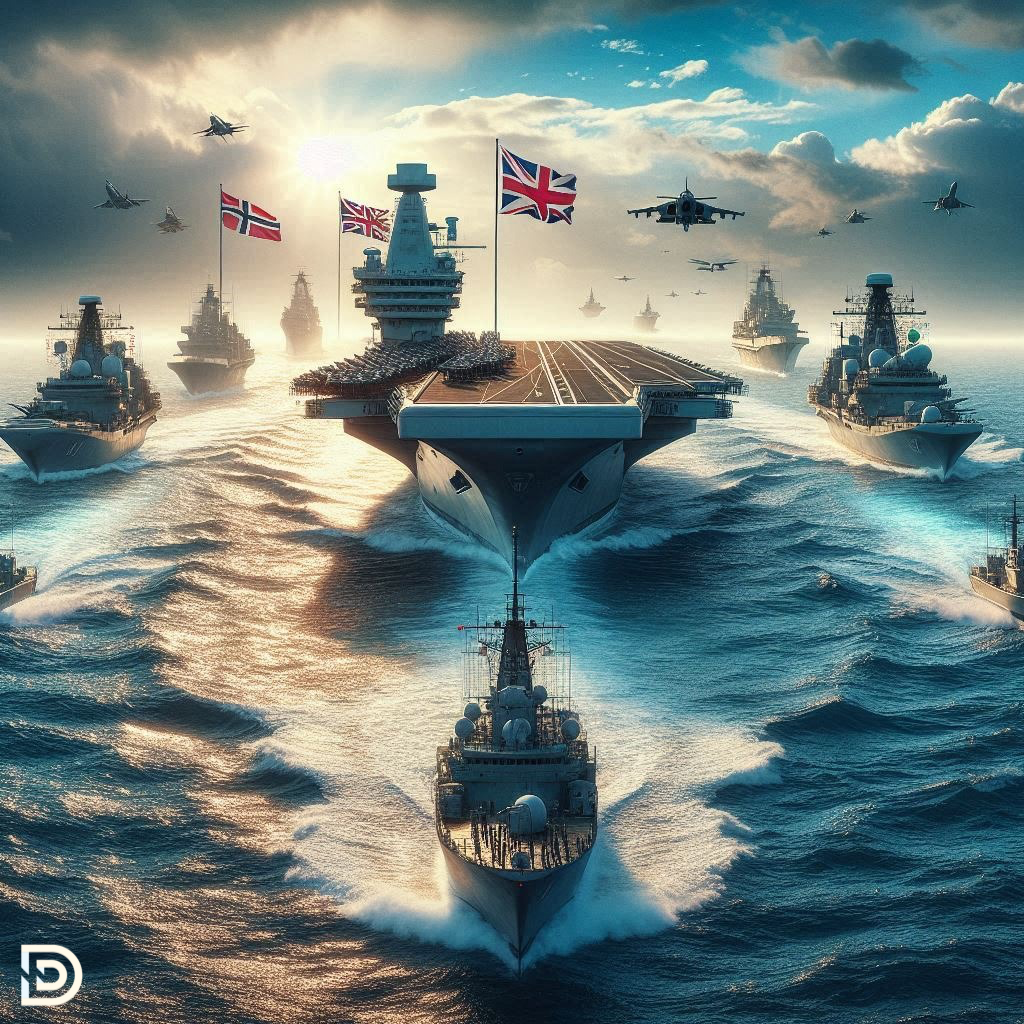In a major announcement, Norway will join the UK’s Carrier Strike Group in a deployment to Japan and the Indo-Pacific region in 2025. This decision was shared by the UK’s Defence Secretary, John Healey, following discussions with his Norwegian counterpart, Bjørn Arild Gram, in London. The deployment aims to strengthen maritime partnerships and support peace in the Indo-Pacific.
Strengthening Maritime Partnerships
The UK’s Carrier Strike Group, led by HMS Prince of Wales, will go to the Indo-Pacific region in 2025. It will team up with the Japanese Self-Defense Forces and other partners. This shows the UK and Norway are working together for peace and stability in the region.
Norway, a NATO ally, will add two ships to the group, including one frigate. This shows how Europe and the Indo-Pacific are connected in keeping the world safe.
UK Defence Secretary John Healey said it’s important to have strong partnerships with European allies. He is excited that Norway is joining the Royal Navy for this mission. He believes it will help the two countries work better together in the future.
Norwegian Defence Secretary Bjørn Arild Gram said the UK is Norway’s closest European ally. He talked about the strong defense relationship between the countries. Gram also said that the Indo-Pacific is becoming more important for global security and stability.
Enhancing Global Security and Stability
The deployment will allow the Carrier Strike Group to operate with NATO and other key partners in the Indo-Pacific. Norwegian Armed Forces will benefit by developing skills and proficiency in allied carrier operations, which is vital for national defense.
This deployment underlines the UK’s commitment to maintaining a free and open Indo-Pacific. The presence of HMS Spey and HMS Tamar in the region further demonstrates the Royal Navy’s persistent efforts to support global security.
Duration and Benefits of the Deployment
The deployment will last about seven months and have many benefits. It will make military and security ties stronger among the countries involved. It will also show the UK’s commitment to global security. As part of NATO, the deployment aims to build partnerships with countries that have similar views.
The Carrier Strike Group, a versatile and powerful force, will lead this effort. With an aircraft carrier embarked with F-35B Lightning jets, the group includes submarines, warships, and support vessels from allied navies. This formidable presence provides cutting-edge air, surface, and underwater defense.
Strategic Objectives and Global Impact
Beyond military capabilities, the Carrier Strike Group will focus on delivering broader strategic objectives. The deployment aims to enhance mutual understanding and cooperation between the UK, Norway, and their partners in the Indo-Pacific. It also seeks to promote a shared commitment to global peace and stability.
Way Forward
The UK’s decision to include Norway in its Carrier Strike Group deployment to the Indo-Pacific reflects a strong partnership between the two nations. By collaborating with Japan and other regional partners, the UK and Norway demonstrate their dedication to maintaining security and stability in a crucial area of the world.
This joint effort reinforces the importance of international cooperation in addressing global security challenges. As the Carrier Strike Group embarks on its mission, it symbolises a commitment to upholding shared values and ensuring a safer future for all.

